While everyone else is looking forward to the new season, I want to take a moment to savor the NYC season just passed. I found the following offerings absolutely exhilarating. (I wrote a shorter, earlier version of this for Tanz magazine in Berlin.)
Lia Rodrigues brought a seething, constantly shifting world titled Encantado to Brooklyn Academy of Music. Her performers, at first burrowing under colorful blankets, evolved from root vegetables to lumbering animals to preening and prancing humans. The illusion of total spontaneity veiled an undergirding of a highly choreographed ecology. The final scenes were like a big gay pride parade for every species.
Justin Peck’s new Copland Dance Episodes for New York City Ballet at first seemed daunting: Twenty-two sections with no intermission, no story. But Peck’s passion for Aaron Copland’s music drove this juggernaut to an inspired place where there was not a dull moment. Simple actions like leaning and falling transformed into complex patterns that cast a witty, formalist spell. A celebration of ballet as a non-narrative form.
Another huge premiere, this one in the narrative mode, was Christopher Wheeldon’s Like Water for Chocolate for American Ballet Theatre, co-produced by The Royal Ballet. The magical surrealism of Laura Esquivel’s novel gleamed in the glorious visuals—a front drop of Mexican tile designs, a row of old woman knitting with flashing needles, mountains in the distance—and in Wheeldon’s storytelling expertise. The music by Joby Talbot incorporated sounds of Mexican instruments like the ocarina. One big plus was the feisty strength of the women characters—which does not always happen in ballet narratives, old or new.
A surreal experience, Faye Driscoll’s Weathering at New York Live Arts was both sensual and drastic. It began as a tableau in utter stillness, eleven people crowded together as if frozen on a sinking ship. With imperceptible slow motion, they started smashing together, getting tangled in each other’s body parts and clothing. Picking up speed, they went from remote to heated to feverish and, finally, to a giddy sense of freedom. That ship, a large rotating platform, was like a magnet that the dancers were compelled to race away from but also stay connected to—even as the ship itself started drifting from side to side. Like some of her previous work, Driscoll was asking, What happens when the ground underneath you is destabilized? The entire experience was both shocking and satisfying.
Bobbie Jene Smiths’ Broken Theater, a collaboration with American Modern Opera Company, was a clamorous yet elusive theatrical experience. It filled La MaMa’s Ellen Stewart space with absurdist interactions, dramatic texts, and isolated songs. The men engaged in a kind of tortured visceral dance; the women had a strange, veiled sisterhood. No scene was finished; no scene was spared from brokenness. Yes every moment was charged with emotional intensity.
Camille A. Brown brought her masterwork Ink, based on Black dance forms like the lindy and the hustle, to the Apollo in Harlem. It had been a hit at The Joyce in 2019, but it was exciting to see it again at the Apollo, where there is such cultural resonance. The sensual solos, explosive interactions, and choreographic brilliance rocked the house.
Another joy ride was Swing Out, led by the exuberant non-binary tap dancer Caleb Teicher, at the Joyce. His rhythms, humor, and the push-pull partnering of the lindy were thrilling. The Eyal VIlner Big Band added to the feeling of celebration.
On a more intimate scale, two Russian postmodern dancers—former Trisha Brown dancer Elena Demyanenko and Berlin-based Tarik Burnash—came to the Bohemian National Hall. In on the other side, the two were obviously troubled by the current war, expressing their disconnection with their families back in Russia through an existential sense of isolation. They sometimes clung to each other, holding each other back from rage. Songs from their childhoods came through their vocalizing; so did the growling sounds of wounded animals.
Back in Harlem, this time at St. Mary’s Episcopal Church, Urban Bush Women co-directors Chanon Judson and Mame Diarra Speis created an immersive production called Haint Blu. Starting in the “healing garden” of the church, they led us through a community ritual of storytelling, dance, song, a bathtub, and percussion. Every member of UBW possesses a fierce individuality, making for an exciting ensemble of defiance.
Liz Roche Company came to the Irish Arts Center with Yes and Yes, which marked the centenary of James Joyce’s Ulysses. Using the famous text only minimally, Roche highlighted the rawness, arduousness, and sometimes outlandishness, of Joyce’s words. In one arresting section, the four dancers took on the four valves of the heart in an astonishingly intricate pas de quatre.
Vertigo Dance Company from Israel returned to Baryshnikov Arts Center, with Pardes, by artistic director Noa Wertheim. The dancers set up a repetitive side-to-side stepping, one foot hitting opposite ankle each time. Within that steady rhythm, which was both punishing and mesmerizing, the dancers wove in and out of each other. One woman seemed to go crazy…was she tormented or rescued by her fellow dancers? The duets in this work, as in other works by Wertheim, are full of mutual challenge and caring, out of which grows a painful beauty.
Props to Susan Stroman, who choreographed and directed the joyful New York, New York. Every dance was staged magnificently. Not since Jerome Robbins have I seen a Broadway choreographer who can build a scene until you think they can’t top themselves and then they do. The manic scene where Jimmy Doyle tries out every instrument is priceless. With spontaneity and humor, Stroman surprises her audience; with her range of moods she gives a full experience in the theater.
For supreme standout dancers on Broadway, there were two: J. Harrison Ghee, who, as Jerry/Daphne, was the heart of the updated, non-binary story of Some Like It Hot, directed and choreographed by Casey Nicholow. And Jared Grimes, as Eddie in Funny Girl, who shared his astonishing, almost recklessly inventive number “I Taught Her Everything She Knows” the night of the Chita Rivera Awards, to waves of ovations.
Kyle Abraham’s MotorRover, a subtle duet in silence, was the modest premiere of his season at the Joyce. It was performed by two men the night I saw it, but by two women on other nights. With its scooping, extending, curving phrase slipping in and out of unison, it sets up a pure-movement mode. But at certain moments—a look, a preening gesture, a sauntering towards or away—it shifted into seductiveness. With sly wit, Donovan Reed and Jamaal Bowman captured that subtle flirtatiousness. The silence allowed us to pick up the switching of intension with knowing delight. (I wish I could’ve returned to see Tamisha A. Guy & Catherine Kirk perform it too.)
CCN Ballet de Lorraine came to the NYU Skirball with a double bill, the first half of which was the intriguing For Four Walls, choreographed by Petter Jacobsson & Thomas Caley. In a space that was mirrored to multiply the dancers’ images, it started with almost pristine barre work while onstage pianist Vanessa Wagner played the first movement of John Cage’s Four Walls. As the music became more irregular, so did the dancing, revealing the origami-like ways those mirrors repeated and refracted the choreography. The foldings and unfoldings eventually exploded into wildly bounding partner work. It was postmodern bliss.
Revival: What a time travel experience it was to see Robert Whitman’s American Moon at the Pace Gallery! This was a 1960 happening brought stubbornly to life by Pace Live. We sat in little compartments, surrounded by debris of paper, burlap, and ropes. It was like being inside a child’s tree house or toy attic. Figures encased in in crudely painted paper mâché objects waddled or swayed or got hoisted or dropped. We could see the person pulling the ropes. No theatrical illusions here. It was funny, but no belly laughs, just maybe a wry smile. This video gives you an idea of the experience. The most vigorous human activity was two people furiously rolling toward and away from each other. (Simone Forti originally did this part with Whitman.) A huge plastic encasement gets inflated as scraps of paper float down from above—a man-made snowstorm. Dream on.
A Trend: In three works, I saw dancers disrobing themselves or each other in an almost random way, while continuing to dance wearing only scraps of clothing. This happened in Lia Rodrigues’ Encantado, in Faye Driscoll’s Weathering, and in Miguel Gutierrez’ Cela Nous Concerne Tous (This Concerns All of US), the second half of Ballet de Lorraine’s show at NYU Skirball. These scenes were not driven primarily by seductiveness or sexual desire—although that was there—but by a compulsion to bare the body, to shed the outer layers of comportment. I would call it an urgency of exposure, perhaps related to what we see on social media (the postings that say “I’m available” or “I’ve achieved a gorgeous body”). On second thought, what these three pieces shared was a compulsion toward freedom—even if a dose of despair infiltrated that freedom.
Featured Leave a comment
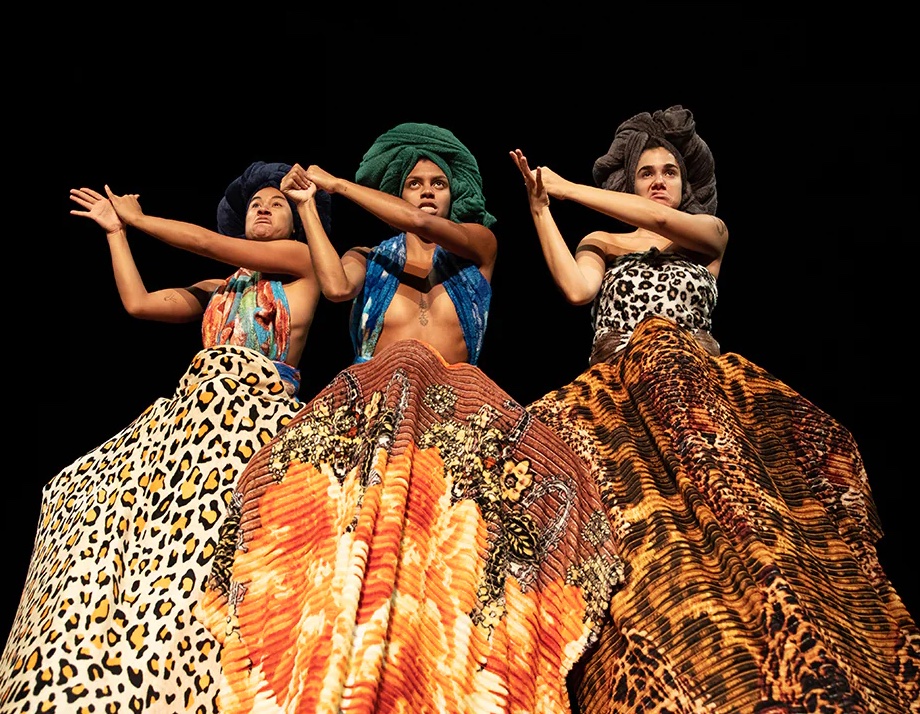
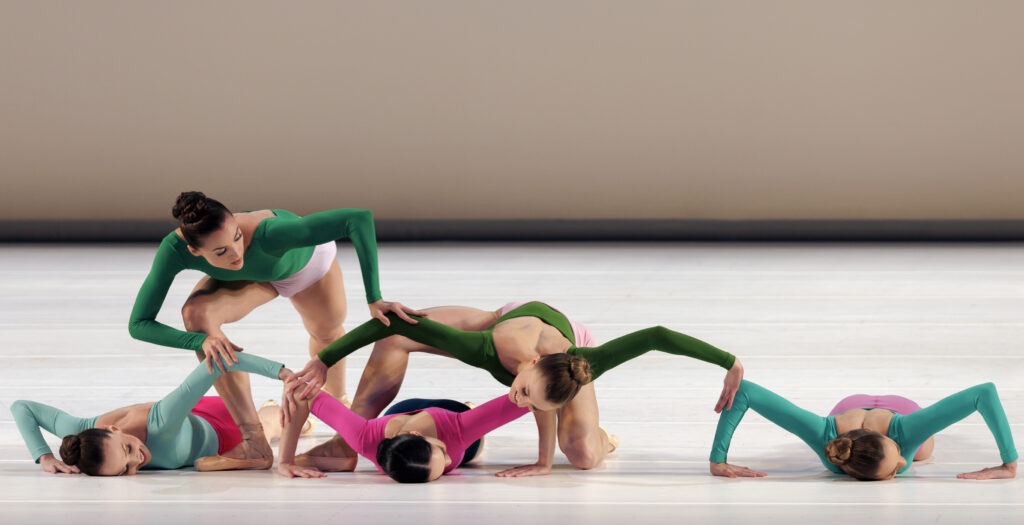
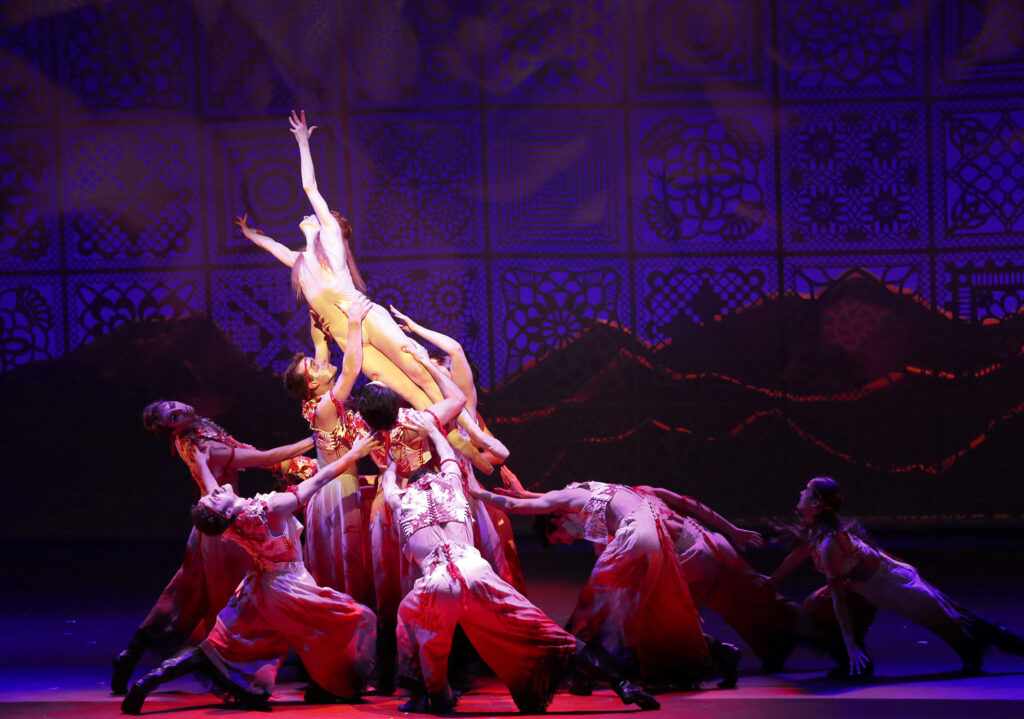
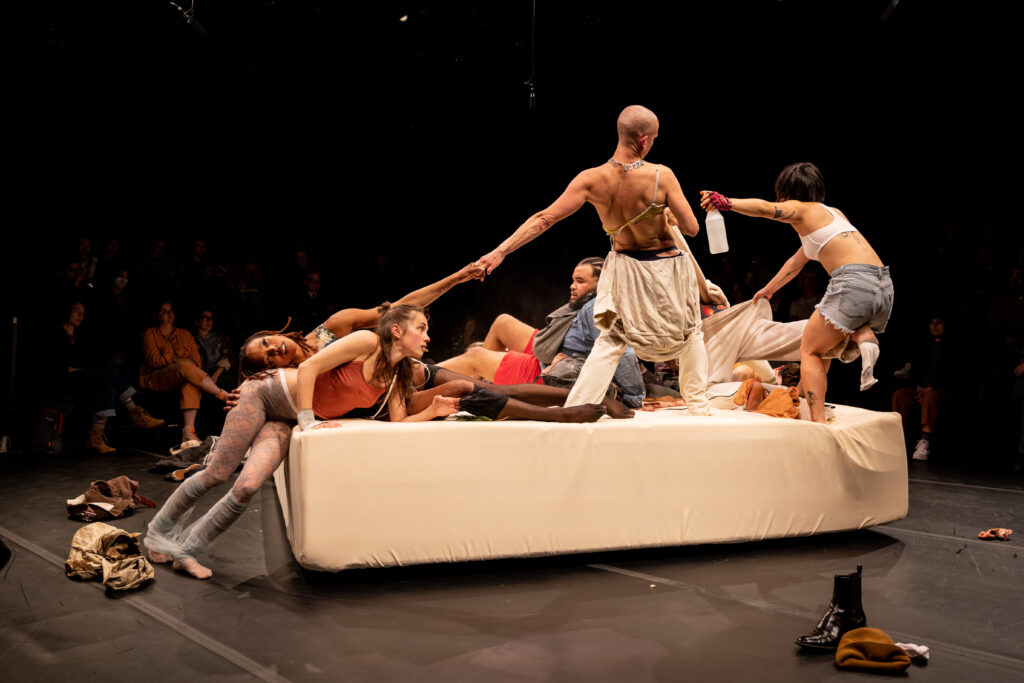
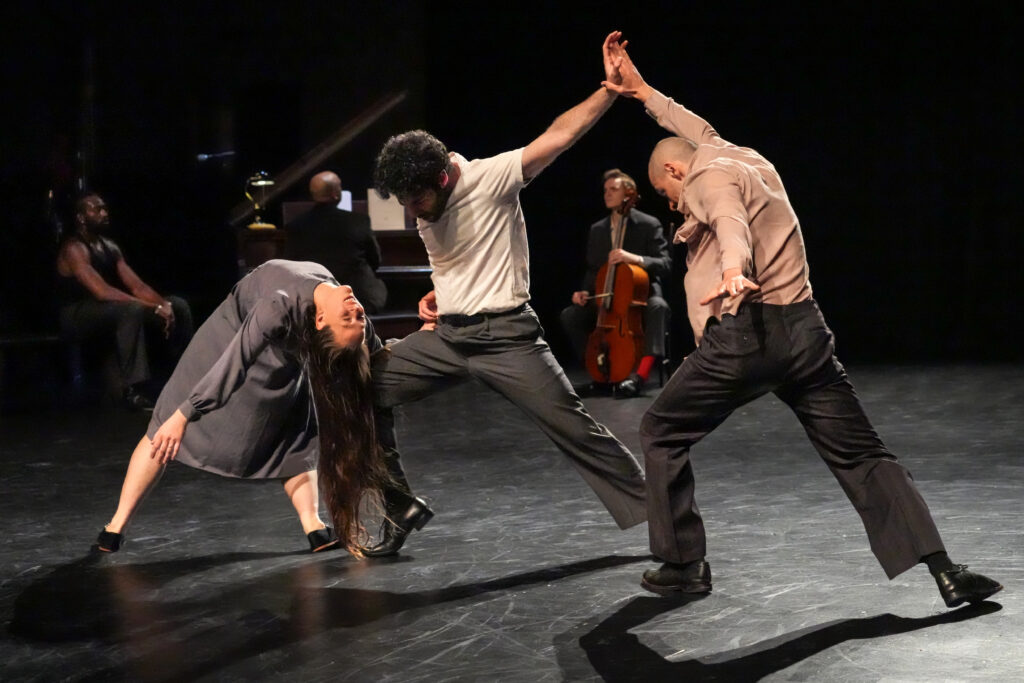
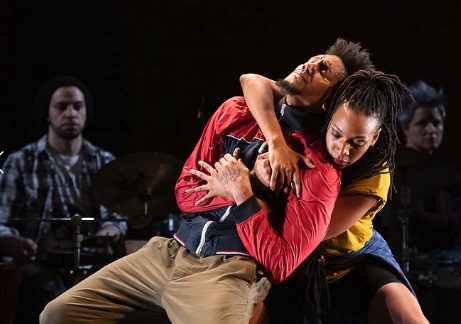
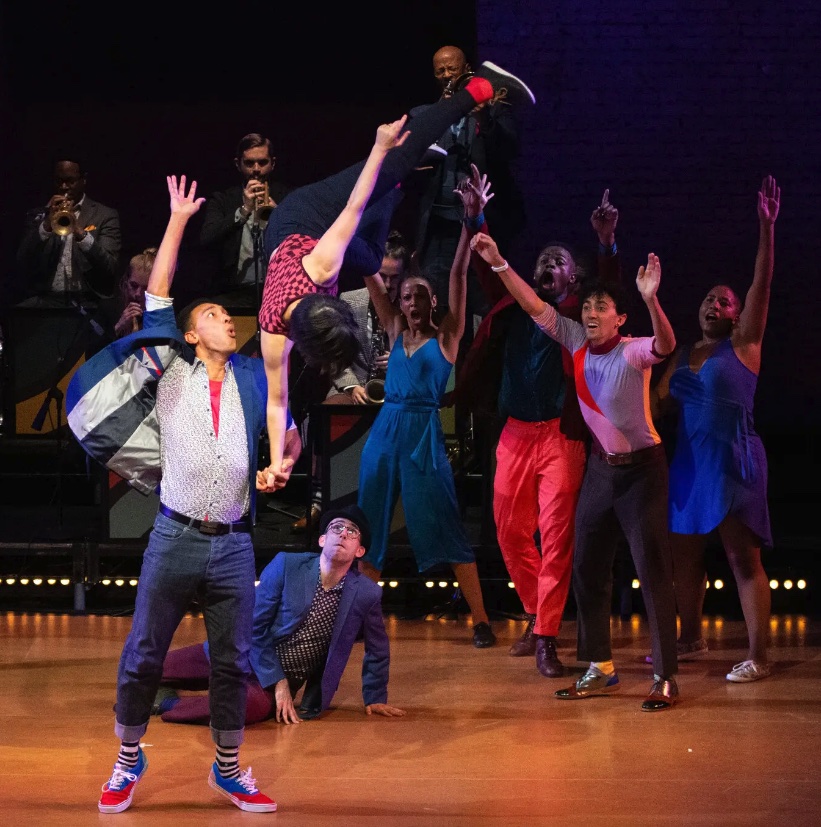
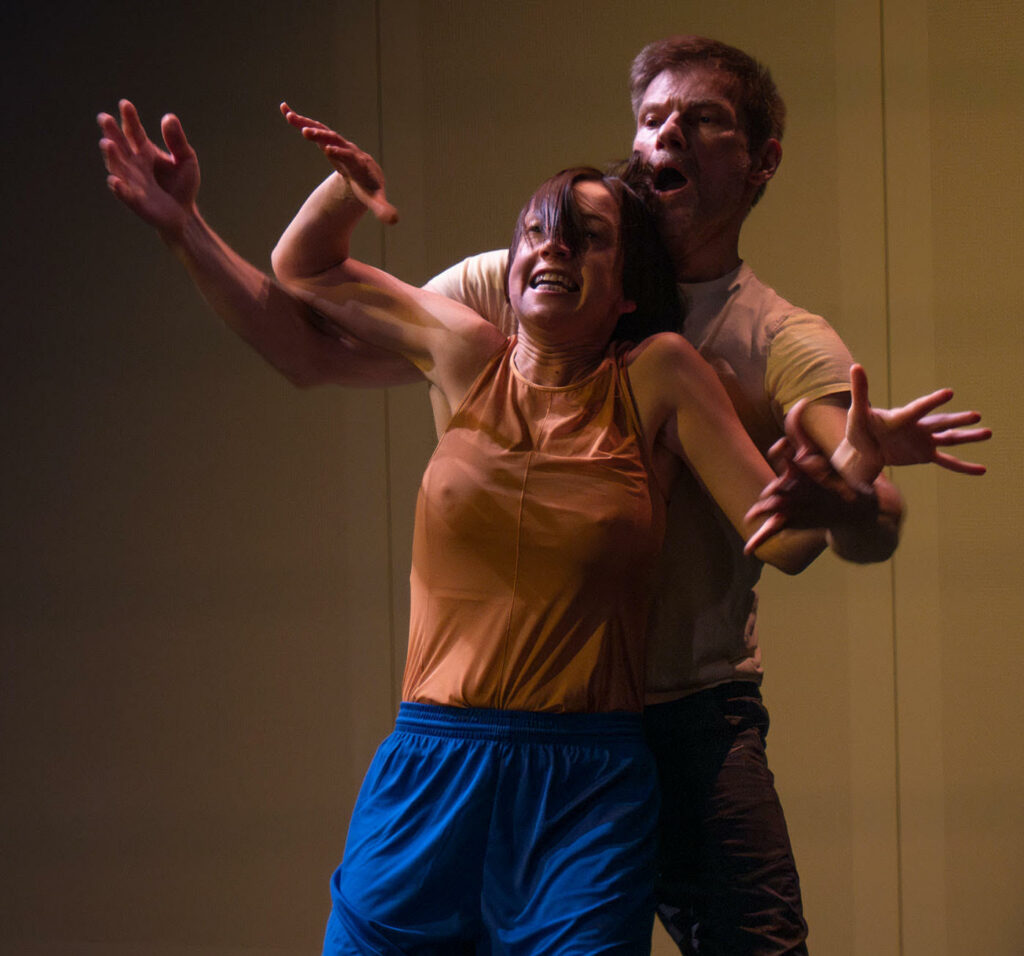
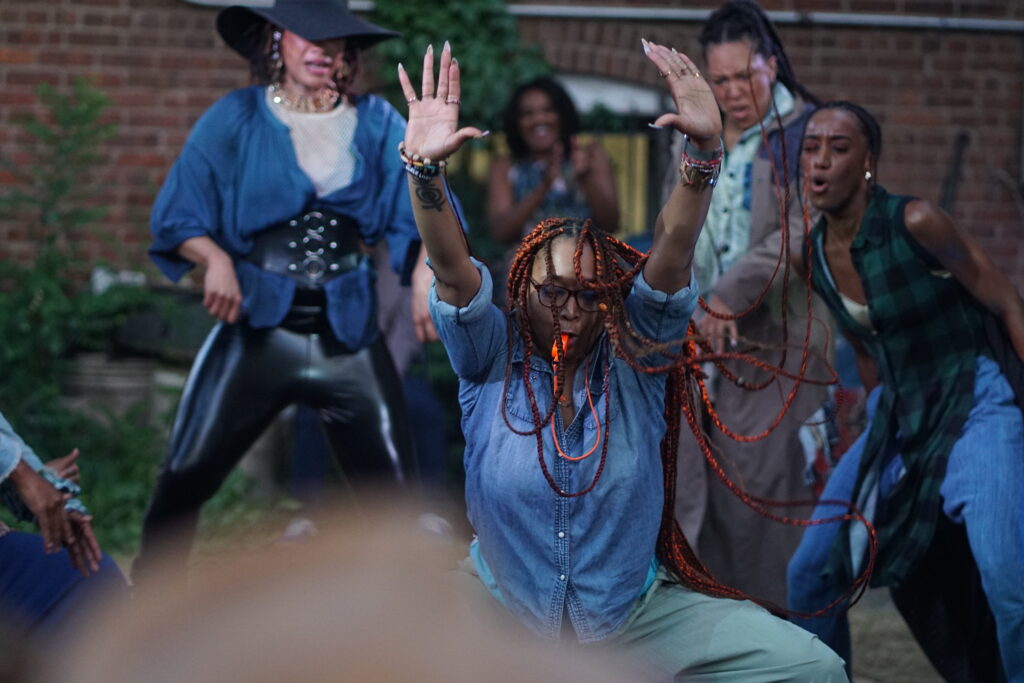
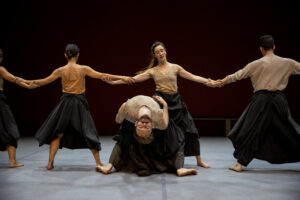
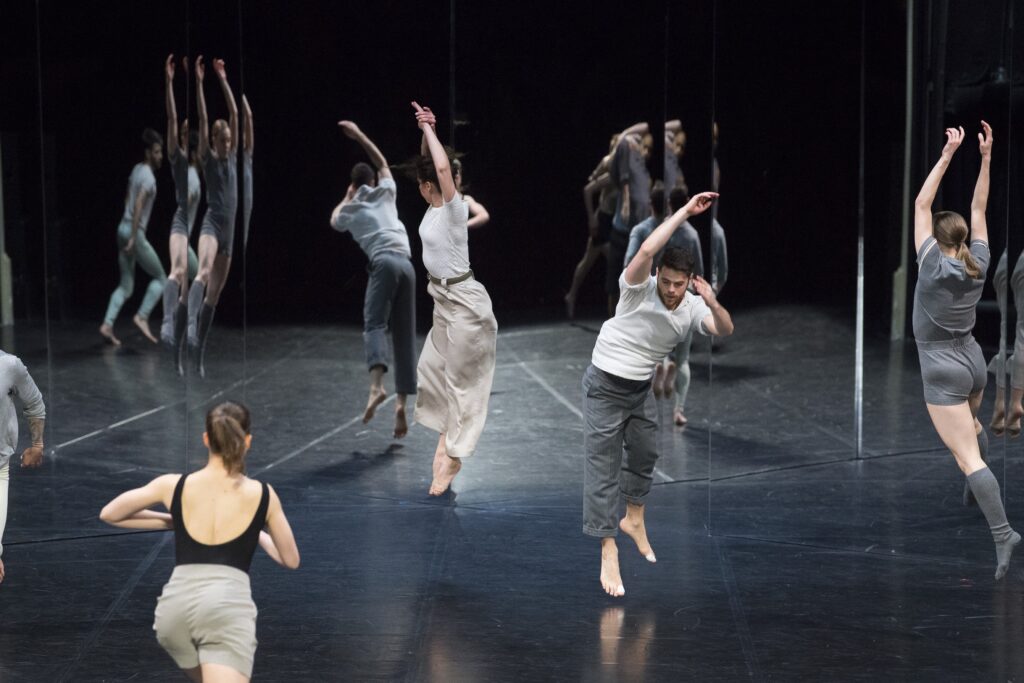
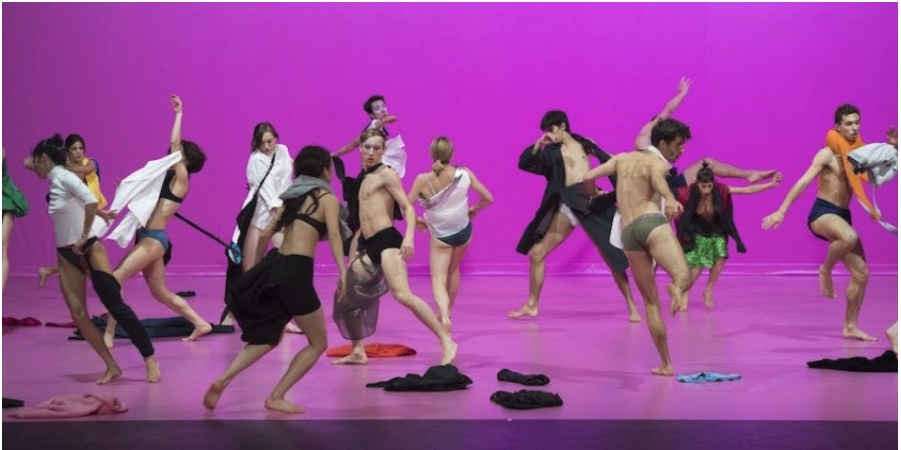
Leave a Reply